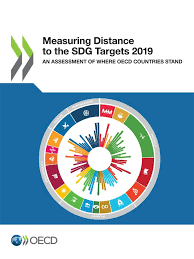
http://www.oecd.org/development/advanced-economies-still-have-plenty-of-...
http://www.oecd.org/development/measuring-distance-to-the-sdg-targets-20...
Measuring Distance to the SDG Targets 2019: An Assessment of Where OECD Countries Stand finds that in most OECD countries there is widespread access to electricity, mobile networks and basic sanitation. Countries have met targets for maternal and infant mortality; and are making progress in reducing deaths from AIDS, TB, Hepatitis B, and road accidents. They are also cutting smoking and gradually adopting renewable energy sources. Yet, OECD countries are still leaving many people behind, and are struggling to reach the targets related to gender equality and to reducing inequality. Even more worrisome, some countries are moving in the wrong direction on some targets, with worsening performance since 2005.
In particular, medium-term GDP growth and productivity growth are on the wane in many countries. One in seven people in the OECD area live in poverty, and one in four 15-year-olds and adults lack basic numerical competency. Obesity and unemployment have been rising in one third of OECD countries since 2005, and in 13 countries vaccination coverage is dropping, risking outbreaks of diseases thought to have been eradicated. The number of threatened species is on the rise in two thirds of OECD countries.
“The SDGs and the 2030 Agenda objective of leaving no one behind are our promise and our responsibility to future generations. Unfortunately we are very far from being able to declare Mission Accomplished,” said OECD Secretary-General Angel Gurría, launching the report at the start of the annual OECD Week. “We must all redouble our efforts, with countries working together to make sure that the goals are achieved within the deadline that the international community set four years ago. We owe it to our children and to our planet.”
The report uses a unique methodology that enables a comparison of countries’ progress and data gaps across the 17 SDG Goals and the specific targets that underpin them, using the UN Global List of 244 indicators as a starting point. It also finds that over half the 2030 targets involve a transboundary effect, meaning that achieving them in one country will have an impact in others or on global goods, such as climate.
Key findings in the report include:
- Around 14% of the OECD population lives in relative poverty, far from the goal of halving poverty rates (half of the median rate in OECD countries is 5.5%).
- Across the OECD, 14% of youths are not in education, employment or training. Rates are above 20% in Italy and Turkey, and are at least 17% in Chile, Mexico and Spain.
- Women hold fewer than one-third of seats in national parliaments on average in the OECD, with no country achieving the target level (i.e. equal representation).
- Official development assistance (ODA) is still running at less than half the UN target of 0.7% of national income.
- Some 6% of women across the OECD report having been subjected to violence by a partner in the last 12 months [and as high as 11% in some countries]. This is far from the target to eliminate all forms of violence against women and girls.
- Significant data gaps for the UN Global List of indicators mean that performance on more than one-third of the SDG targets cannot be assessed in OECD countries. Environment goals contain some of the biggest data gaps.










Add new comment